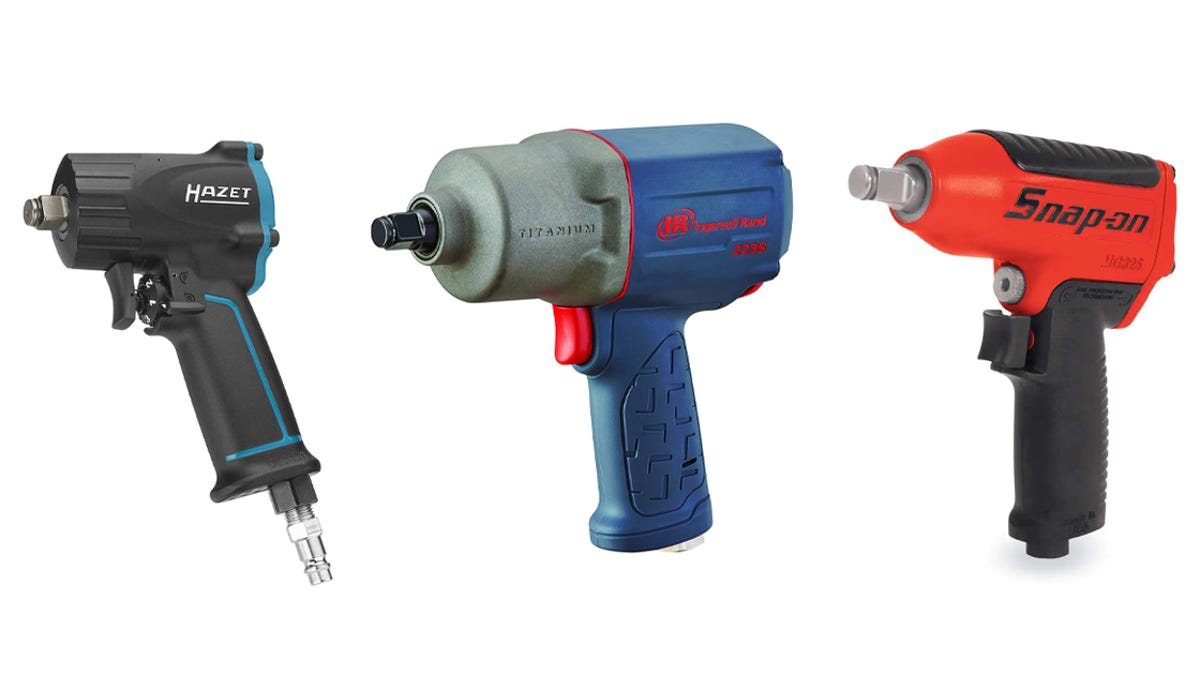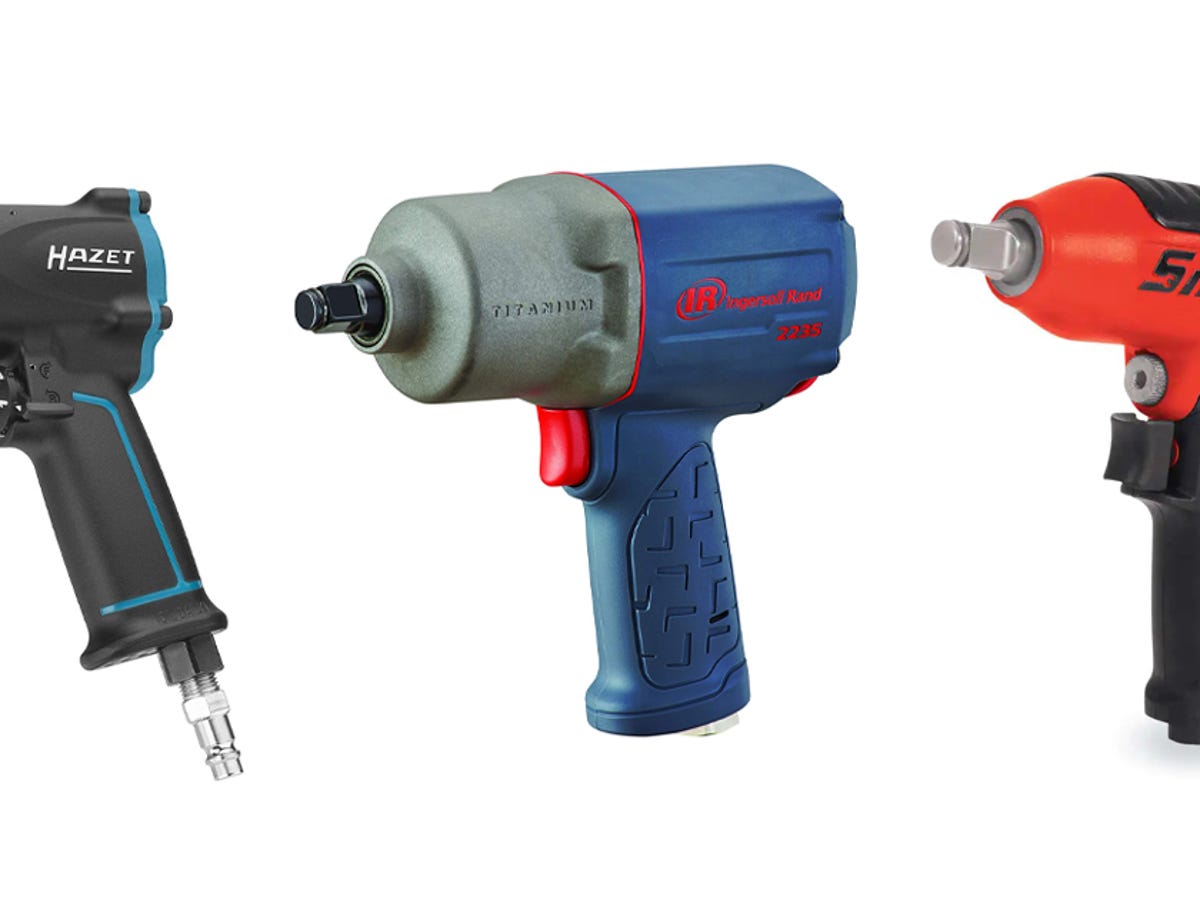For an impact wrench, a 6-gallon air compressor with a minimum of 4 CFM at 90 PSI is suitable. Larger compressors provide better performance for heavy-duty tasks.
Impact wrenches are essential for automotive and mechanical work, requiring a reliable air compressor. Choosing the right compressor involves understanding the tool’s air consumption needs. A 6-gallon compressor is sufficient for light to medium tasks. For more demanding jobs, larger compressors with higher CFM ratings offer better efficiency and power.
It’s crucial to match the air compressor’s capacity to the impact wrench’s requirements. This ensures optimal performance and longevity of both the tool and compressor. Investing in the right air compressor enhances productivity and ensures seamless operation of your impact wrench.

Key Factors
Choosing the right air compressor for your impact wrench is crucial. Key factors include PSI, CFM, and tank size. These factors ensure your tool performs well.
Psi And Cfm Requirements
The PSI (pounds per square inch) and CFM (cubic feet per minute) are vital. Most impact wrenches need 90 PSI to work properly. CFM measures the air volume the compressor provides.
Typically, an impact wrench requires 4 to 5 CFM. Check your tool’s manual for exact needs. Ensure the compressor can meet or exceed these requirements.
Tank Size Considerations
The tank size affects how long you can use your tool. Smaller tanks, like 6 gallons, need frequent refilling. Larger tanks, such as 20 gallons, provide longer usage.
Consider your work type and frequency. For light, occasional tasks, a smaller tank is fine. For heavy-duty, frequent tasks, a larger tank is better.
| Impact Wrench Type | PSI Requirement | CFM Requirement | Recommended Tank Size |
|---|---|---|---|
| Light-Duty | 90 PSI | 4 CFM | 6-10 gallons |
| Medium-Duty | 90 PSI | 4.5 CFM | 10-20 gallons |
| Heavy-Duty | 90 PSI | 5 CFM | 20 gallons or more |
Small Compressors
Small compressors are versatile tools for powering impact wrenches. They are compact and easy to transport. These compressors are perfect for small tasks and tight spaces.
Benefits And Drawbacks
Benefits:
- Portable: Easy to move around.
- Compact: Fits in small spaces.
- Affordable: Costs less than larger models.
Drawbacks:
- Limited Power: May not handle heavy-duty tasks.
- Shorter Runtime: Needs frequent recharging.
- Noise: Can be louder than larger units.
Best Uses
Small compressors are ideal for light-duty tasks:
- Changing tires on small cars.
- Inflating sports equipment.
- Performing quick repairs.
These compressors are best for home garages and small workshops. They are also suitable for hobbyists and DIY enthusiasts.
Medium Compressors
Medium compressors are a popular choice for powering impact wrenches. They provide a balanced mix of power and portability. These compressors are suitable for both professional and DIY use. Choosing the right size ensures optimal performance and efficiency.
Advantages
Medium compressors offer several advantages:
- They provide enough power for most impact wrenches.
- They are more portable than large compressors.
- They usually have a good price-to-performance ratio.
Ideal Applications
Medium compressors are ideal for various applications:
| Application | Details |
|---|---|
| Home Garages | Perfect for DIY automotive work and small repairs. |
| Workshops | Suitable for medium-sized workshops needing reliable power. |
| Construction Sites | Useful for powering multiple tools on-site. |
Medium compressors are versatile and efficient. They balance power and portability.

Large Compressors
Large compressors are ideal for powering impact wrenches. They offer the power and capacity needed for heavy-duty tasks. These compressors ensure your tools run smoothly without interruptions.
Power And Performance
Large compressors deliver high power and performance. They typically have a higher CFM rating. This means they can provide more air to your impact wrench. The higher the CFM, the better the performance of your tool.
These compressors often come with motors that have higher horsepower. This ensures a consistent and reliable air supply. This is crucial for tasks that require sustained power. With a large compressor, your impact wrench can handle tougher jobs effortlessly.
Suitability For Heavy-duty Tasks
Large compressors are highly suitable for heavy-duty tasks. They can handle continuous use without overheating. This makes them perfect for professional workshops and construction sites.
These compressors usually have large tanks. This allows for longer working periods without frequent refills. The larger the tank, the fewer interruptions you will face. A larger tank also helps in maintaining consistent air pressure.
Here is a table that outlines some key specifications:
| Specification | Details |
|---|---|
| CFM Rating | 8-12 CFM |
| Horsepower | 5-7 HP |
| Tank Size | 60-80 Gallons |
Large compressors also have robust build quality. This ensures they last longer and can withstand tough environments. Investing in a large compressor is wise for heavy-duty impact wrench tasks.
Portable Vs. Stationary
Choosing between a portable and a stationary air compressor for your impact wrench is crucial. Each type has its unique advantages and disadvantages. Understanding your specific needs will guide you to the best option.
Mobility Needs
Portable air compressors are ideal for those who need mobility. They are lightweight and easy to carry. You can use them in various locations without hassle.
- Lightweight and easy to transport
- Can be used in multiple locations
- Suitable for small to medium tasks
Stationary air compressors are better for fixed workspaces. They offer more power and larger tanks. This makes them suitable for heavy-duty tasks.
- More powerful with larger tanks
- Best for heavy-duty, continuous tasks
- Stay in one place
Space Constraints
Portable air compressors take up less space. They can be stored in small areas when not in use. This makes them perfect for home garages or small workshops.
- Compact size fits in small spaces
- Easy to store
- Less intrusive in a workspace
Stationary air compressors require more space. They need a dedicated spot in your workshop. Ensure you have enough room before choosing a stationary model.
- Larger footprint requires more space
- Needs a dedicated area
- Not easily moved
| Feature | Portable | Stationary |
|---|---|---|
| Mobility | High | Low |
| Power | Moderate | High |
| Space Required | Low | High |
Top Models
Finding the right air compressor for your impact wrench is crucial. It’s important to choose a model that meets your needs. Here are the top models categorized by size and performance.
Best Small Compressors
Small compressors are portable and easy to use. They are perfect for light-duty tasks.
- California Air Tools 1P1060S – This model is ultra-quiet and oil-free. It delivers 1.2 CFM at 90 PSI.
- PORTER-CABLE C2002-WK – This pancake compressor offers 2.6 SCFM at 90 PSI. It comes with a 13-piece accessory kit.
- BOSTITCH BTFP02012 – Lightweight and durable, it provides 2.6 SCFM at 90 PSI. It has a 6-gallon tank.
Best Medium Compressors
Medium compressors are suitable for more demanding tasks. They offer a balance of power and portability.
- DeWalt DXCM271 – This 27-gallon model delivers 5.1 CFM at 90 PSI. It has a powerful motor.
- Makita MAC2400 – This model is known for its durability. It provides 4.2 CFM at 90 PSI.
- Campbell Hausfeld DC080500 – Quiet and efficient, it offers 2.4 CFM at 90 PSI. It has an 8-gallon tank.
Best Large Compressors
Large compressors are ideal for heavy-duty tasks. They provide high airflow and pressure.
- Industrial Air IL1682066 – This model offers 6.2 CFM at 90 PSI. It has a 20-gallon tank.
- NorthStar 20-Gallon Vertical – It delivers 5.0 CFM at 90 PSI. It is perfect for serious DIYers.
- Quincy QT-54 – This model provides 15.2 CFM at 90 PSI. It is built to last with a 60-gallon tank.
Maintenance tips
Keeping your air compressor in top condition is crucial. Proper maintenance ensures longevity and efficiency. Here, we provide essential maintenance tips for your air compressor.
Routine Checks
Performing routine checks on your air compressor is vital. Inspect the air filter regularly. A clean air filter ensures optimal performance. Replace the air filter if it is dirty or damaged.
Check the oil level in your compressor. Low oil can damage the internal components. Top up the oil to the recommended level. Use the oil specified by the manufacturer.
Inspect the hoses and fittings. Look for signs of wear or leaks. Replace any damaged parts to prevent air leaks. Ensure all connections are secure.
Troubleshooting Common Issues
Sometimes, your air compressor may face issues. Here are common problems and solutions.
- Compressor won’t start: Check the power supply. Ensure the switch is on. Inspect the fuse and replace if blown.
- Low pressure: Inspect for air leaks. Tighten any loose connections. Check the pressure valve for blockages.
- Excessive noise: Inspect the compressor mounts. Tighten any loose bolts. Ensure proper lubrication of moving parts.
| Issue | Possible Cause | Solution |
|---|---|---|
| Compressor not starting | Power supply issue | Check and replace fuse |
| Low pressure | Air leaks | Tighten connections |
| Excessive noise | Loose bolts | Tighten bolts |

Frequently Asked Questions
What Size Air Compressor For Impact Wrench?
A 20-gallon air compressor with a 5-6 CFM rating at 90 PSI is ideal. This ensures consistent power for most impact wrenches.
Can A Small Air Compressor Run An Impact Wrench?
A small air compressor can work for brief tasks. However, a larger tank and higher CFM rating are better for continuous use.
How Much Psi Needed For Impact Wrench?
Most impact wrenches require 90 PSI to function optimally. Check your tool’s specifications for exact requirements.
Is A 3-gallon Air Compressor Sufficient?
A 3-gallon compressor is often insufficient for continuous impact wrench use. Larger tanks provide better performance and consistency.
Conclusion
Choosing the right air compressor for your impact wrench ensures optimal performance. Consider CFM and PSI requirements for efficiency. A larger tank supports longer tasks without delays. Prioritize quality and compatibility to maximize tool lifespan. Investing in the right compressor enhances productivity and tool effectiveness.

